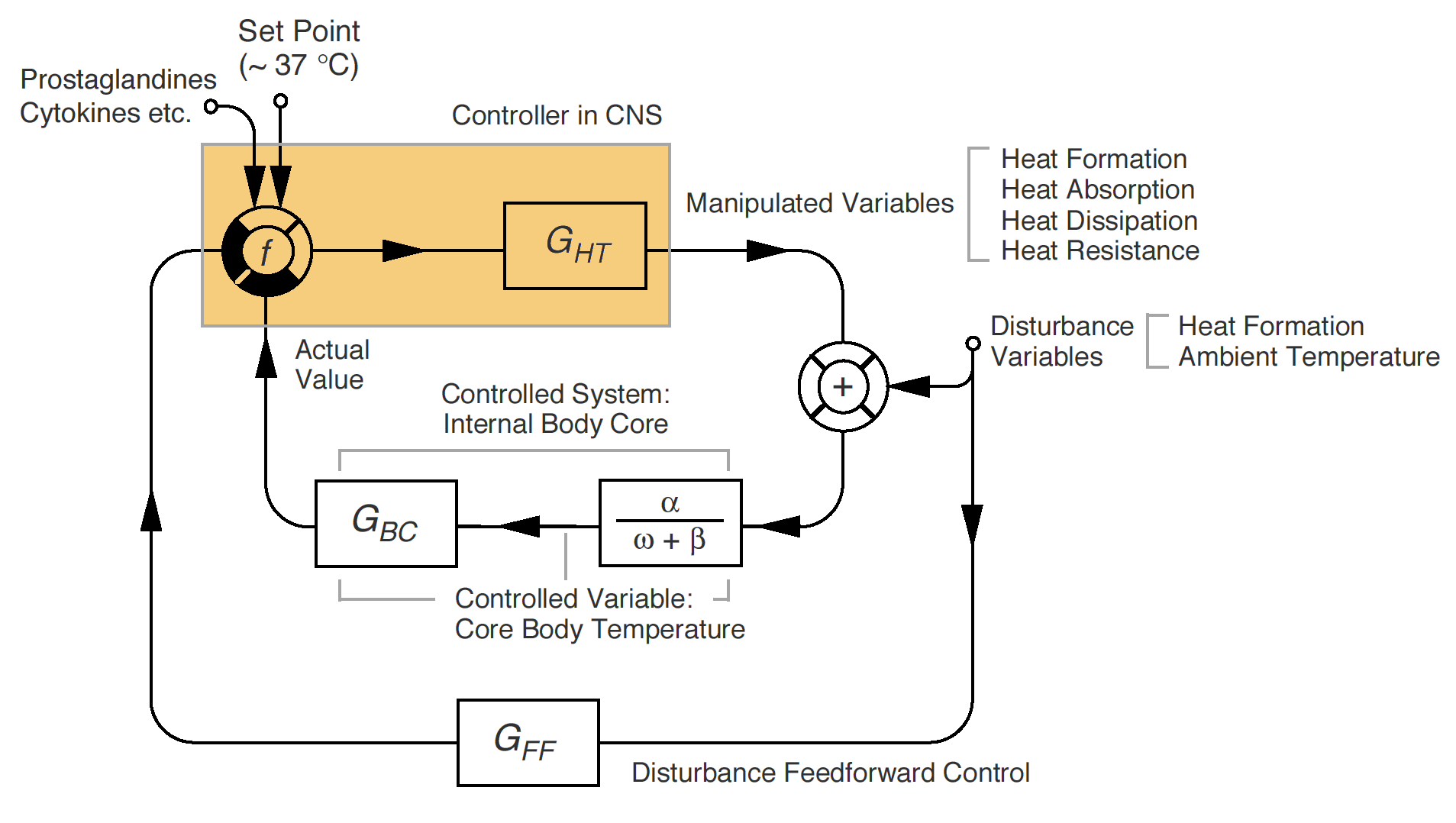An Overview of Homeostasis
Homeostasis refers to the animals ability to regulate its internal environment. Thermoregulation refers to how animals maintain their internal temperature, and osmoregulation refers to how they regulate solute balance and water content.
The digestion and utilization of proteins creates the greatest need for osmoregulation in the kidneys

Thermoregulation takes place through the following processes.
1) The adjustment of the rate of heat exchange between the animal and its environment—through insulating hair, feathers, and fat—is accomplished through vasodilation (an increase in diameter of blood vessels at the skin, which cools the blood) or vasoconstriction (to opposite of vasodilation)
2) Evaporation across the skin (through panting or sweating)
3) Behavioral responses (changes in location of posture)
4) Alteration of the rate of metabolic heat production (only in endoderms).

Mammals and birds are endothermic, whereas amphibians and reptiles are Ectothermic. Fishes and aquatic invertebrates are conformers—that is, they live in relatively stable environments and can accommodate some slight change in body temperature if the environment is altered.
Water Balance and Waste Disposal
Most metabolic wastes must be excreted from the body. One of the most important waste products are nitrogen-containing breakdown products of proteins and nucleic acids.
Enzymes remove nitrogen from these compounds to creat ammonia. Some animals excrete ammonia directly into water, where it becomes diluted. Others convert it first to urea in the liver, where ammonia is combined with carbon dioxide in an endergonic reaction or to uric acid. Uric acid is more energetically expensive to produce, but it is insoluble in water and can be excreted as a paste or crystals.
Excretory Systems
Most excretory systems produce urine in a two step process. First the body fluid (blood or hemolymph) is collected, and then the composition of the fluid is is adjusted by selective reabsorbption of solutes

Insects and terrestrial arthropods like the grasshopper have Malpighian tubules that remove nitrogenous wastes. The open into the digestive tract and dead-end at points in the hemolymph. The tubules secrete nitrogenous wastes and salts into the lumen, and water follows by osmosis.
Mammals have two kidneys, and each is supplied with a renal artery and a renal vein. Urine leaves the kidneys through the ureters, which drain into the urinary bladder. Urine is expelled from the body through the urethra.
The kidney has two regions, the outer renal cortex and the inner renal medulla. These two regions are packed with nephrons which are functional units of the kidneys
Multiple Choice Questions
1. Of the mechanisms by which organisms exchange heat with their surroundings, which one results in only loss of heat from the organism?
A) convection
B) metabolism
C) radiation
D) conduction
E) evaporation
2. Which of these vertebrates are endotherms?
A) birds
B) bony fishes
C) cartilaginous fishes
D) amphibians
E) reptiles
3. Which of the following assertions about regulation of body temperature is correct?
A) Ectothermic animals are cold-blooded.
B) Most animals are endotherms.
C) Insects are always ectothermic.
D) Endothermy involves production of heat through metabolism.
E) Mammals are always ectothermic.
4. All of the following are mechanisms of thermoregulation in terrestrial mammals except
A) changing the rate of metabolic heat production.
B) changing the rate of evaporative loss of heat.
C) changing the rate of heat exchange by anhydrobiosis.
D) relocating to cool areas when too hot or to warm areas when too cold.
E) changing the rate of heat loss by vasodilation and vasoconstriction.
Answers:
1. E
2. A
3. D
4. C
No comments:
Post a Comment